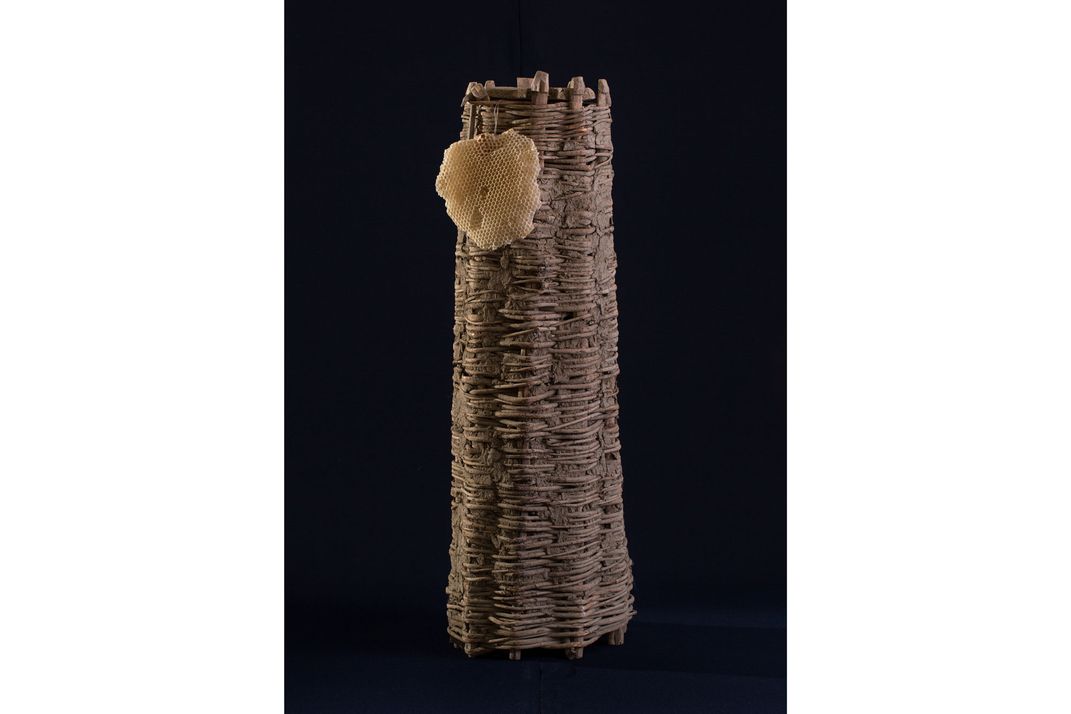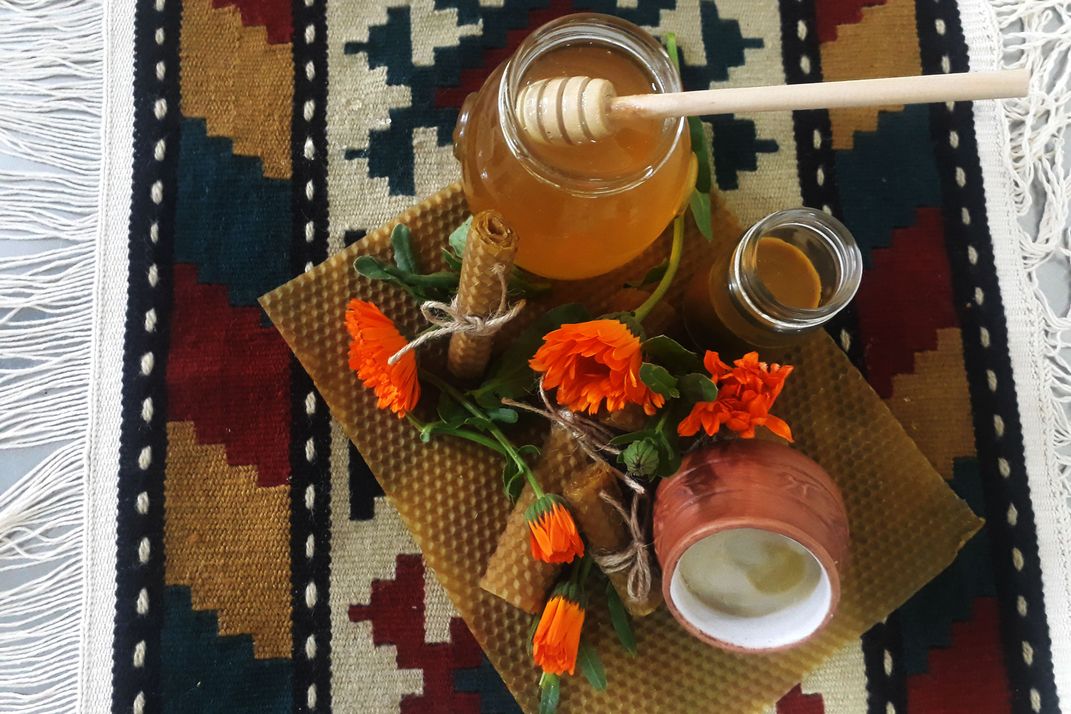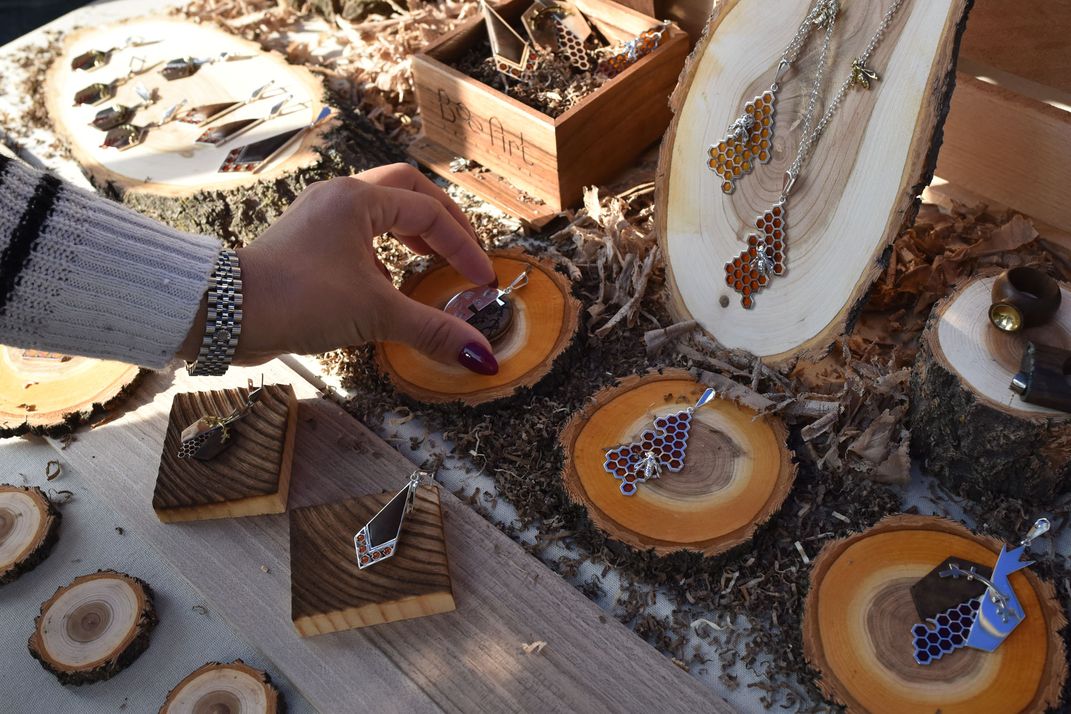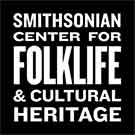SMITHSONIAN CENTER FOR FOLKLIFE & CULTURAL HERITAGE
Travel the Sweetest Route through Vayots Dzor and Syunik, Armenia
Numerous popular traditions regarding beekeeping are associated with the medicinal properties of the use of beeswax. Grandpa Grisha, a beekeeper with 50 years of experience, remembers it all very well.
/https://tf-cmsv2-smithsonianmag-media.s3.amazonaws.com/blogging/featured/Master-Arthur-Petrosyan.-Photo-by-Narek-Harutyunyan-Web.jpg)
In the summer of 2020, the Center for Folklife and Cultural Heritage’s My Armenia Program partnered with Armenian publication Yerevan Magazine to publish a special issue highlighting community-based cultural heritage tourism in the country. Over the next few months, the Center will publish English translations of the articles to Smithsonian Voices.
During this difficult time in the region, we hope these stories shine a light on the resilience of the Armenian people by showcasing their vibrant, diverse cultural heritage.
Seeing the Historical and Cultural Monument of Beekeeping in the Yeghegnadzor Regional Museum
The Museum of Yeghegnadzor has approximately 9,000 objects, ranging from prehistoric times to the 20th century. Most of them present the history of the region—the instruments of the Bronze and Stone Ages, jewelry, earthenware, and rugs, among others. The main treasure of the museum is perhaps the 14th-century khachkar (cross-stone) by the renowned Momik. That being said, the beehive (referred to as moloz [Armenian: մոլոզ] in the local dialect) dating to the 19th century is no less magnificent. Made from the fresh branches of a willow tree, this beehive was discovered in Shatin village. This is the very place where it is best to embark on a honey journey.

Making a Beehive with your Own Hands in Yegheg
Born and raised in Yeghegnadzor, Arthur Petrosyan started a new brand in the town called Yegheg. The branches of the willow growing on the Arpa River banks get soft and flexible in the hands of Master Arthur, eventually becoming woven baskets. These baskets, made from natural material, can be used both as home decoration and as jug and wine bottle encasements, bread plates, or boxes for storing things.
Arthur also explores some of the history of his craft. After seeing the moloz beehive made from willow branches at the Yeghegnadzor museum, he reproduced it at his workshop. Currently, he helps all workshop visitors so that they also may master that craft. Of course, visitors may take home the baskets that they weave with their own hands.
Enjoying Pakhlava with Honey at Mirhav
Many countries of the region have been proclaiming themselves the birthplace of pakhlava for many years. We think that it does not matter where it was invented, but rather where it is the tastiest. From this point of view, Goris may take the top spot. Using the recipe she inherited from her aunt who lives in the village, the chief manager of the hotel-restaurant Mirhav treats visitors to a delicious pakhlava. It is so successful that many people know Mirhav for this signature desert. One of the keys to this success is the natural honey produced in the mountains of Goris. Most importantly, this pakhlava may not only be ordered, but also prepared with your own hands (and then tasted by all means).

Making a Cream with Beeswax in Yeghevnut
Numerous popular traditions regarding beekeeping are associated with the medicinal properties of the use of beeswax. It has been used for a variety of health problems for centuries. Grandpa Grisha, a beekeeper with 50 years of experience, remembers it all very well. Based on the popular tradition using beeswax to wounds and skin cracks, his daughter-in-law, Anush, created a cream that is used very effectively to treat various parts of the feet, and especially the sole.
People used to melt beeswax and apply it on skin cracks, which was rather painful due to its heat. Anush has improved that method. She adds sunflower, olive, sea buckthorn oils, or other essential oils to the melted beeswax. They soften the beeswax and make it viscous. This cream is convenient to use; firstly, it does not hurt the wound, and secondly, it is more effective. The cream can also be used for skin care; it cleanses the skin and gives it a velvety softness.
Anush co-founded the Yeghevnut hotel where you can also try various cooking classes.

Practicing Pottery with the Use of Beeswax at Sisian Ceramics
Pottery master Vahagn Hambardzumyan and his wife, artist Zara Gasparyan, established Sisian Ceramics. Today, they work together in the south of Armenia, developing and preserving Armenia’s cultural heritage of pottery. Sisian Ceramics explores the roots of Armenian pottery, ancient technologies, and types of decorative art. Visitors to the workshop may see how Vahagn heats the clay item at temperatures of 100 to 120 degrees Celsius. He melts the beeswax under the same temperature and applies a thin layer of it to the surface. Then, he fills the interior with the beeswax and quickly empties it. The objective is to make the object waterproof, and not only that: beeswax prevents the clay from absorbing moisture and makes the object more beautiful. Moreover, the works covered in beeswax are easier to wash.

Shopping for Original Bee-like Jewelry
Finally, visitors may return home after a visit to the village of Rind, where they may purchase the jewelry inspired by beehives. The designer and maker of the jewelry is Varazdat Asatryan. It is not surprising that his brand is named BeeArt Exclusive. The collections of BeeArt feature a combination of natural materials such as wood, precious stones, and metals. The result is a harmonious combination of distinctive rings, earrings, and pendants.
About My Armenia
The My Armenia Program, funded by the United States Agency for International Development (USAID) and implemented by the Smithsonian Institution, works to increase and share knowledge about Armenian cultural heritage and build capacity to support the long-term vitality of Armenian cultural sites and practices. Through My Armenia, the Smithsonian seeks to support cultural sustainability by documenting Armenia’s historic and living cultural traditions, sharing this knowledge with global audiences, and supporting the development of local resources and capacity to safeguard this cultural heritage for future generations.
About Yerevan Magazine (EVNmag)
Launched in 2011, Yerevan Magazine is one of the most popular print magazines in Armenia. Known for its high quality, edgy design, and free distribution at more than sixty hotspots in Yerevan (in cafes, restaurants, pubs, and more), EVNmag has become required reading for many Yerevantis—just like coffee in the morning. Even as print magazines fight to stay relevant in an increasingly digital world, with five to seven editions a year and 4,000 copies each, EVNmag remains a beloved and reliable news source covering life in Yerevan.
The Yerevan Magazine issue covering My Armenia was released Friday, August 14, 2020. Armenian versions of these articles can be found online on their website, Facebook, Instagram, and Issuu.
